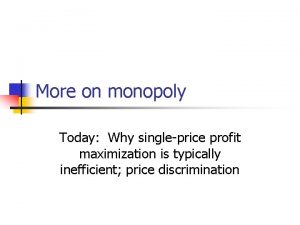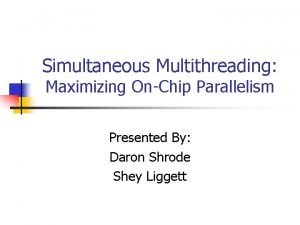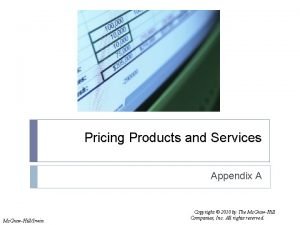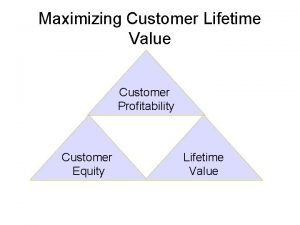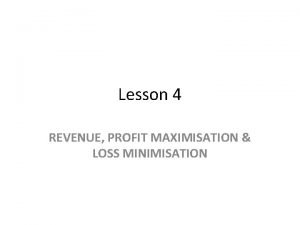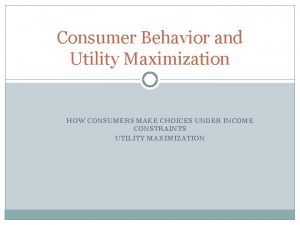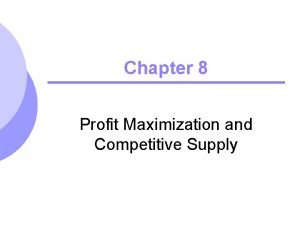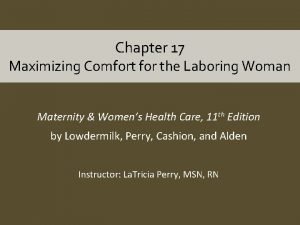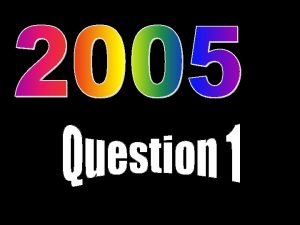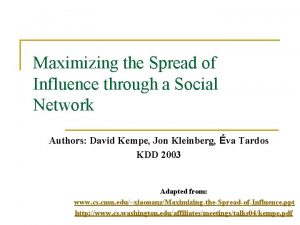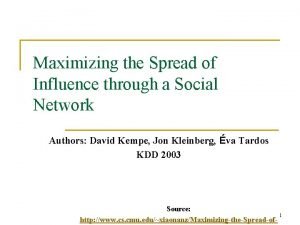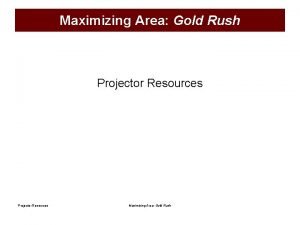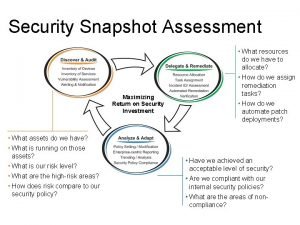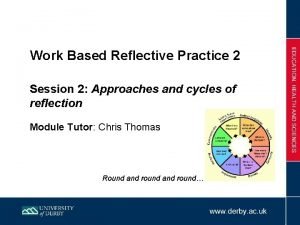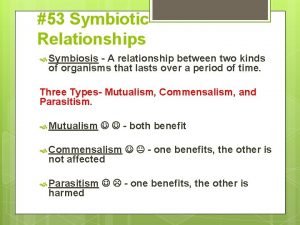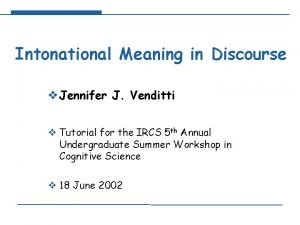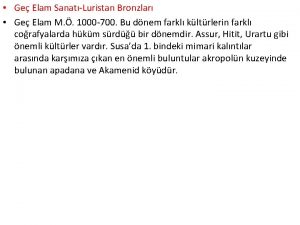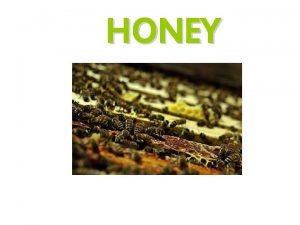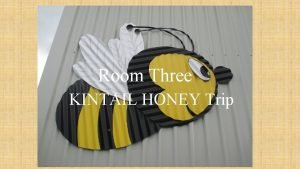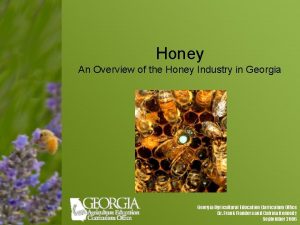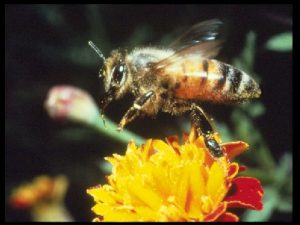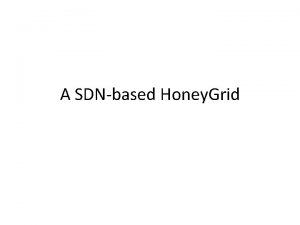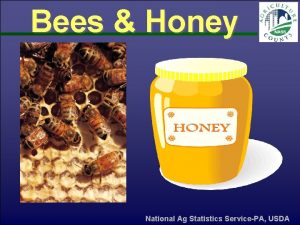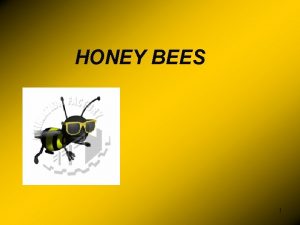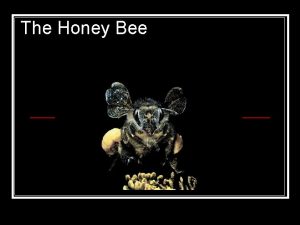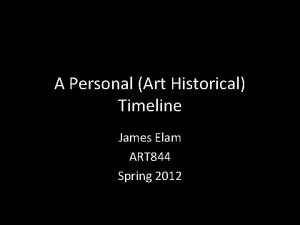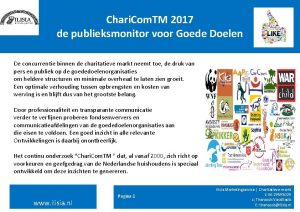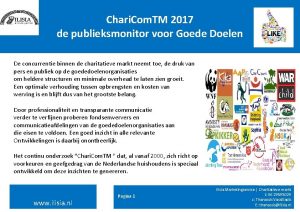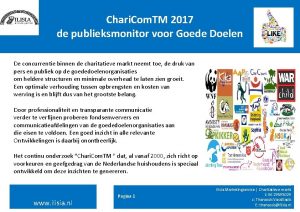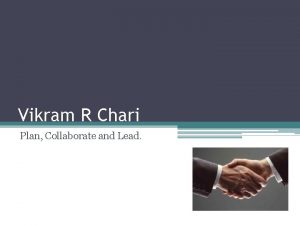Maximizing Honey Production James and Chari Elam 2017























- Slides: 23

Maximizing Honey Production James and Chari Elam 2017 Bluebonnetbeesupply@gmail. com

One of the main reasons for keeping bees is to harvest the honey that bees store in their hives. ~~~~~~ Either for enjoyment or profit Regardless the reason…our skills as beekeepers help determine the amount of production

The amount of honey produced per colony depends on a number of factors… Ø Availability of bee forage area Ø The Queens condition Ø Hive population Ø Nutrition Ø Swarming Ø Space for expansion of the brood nest and honey storage Ø Keeping the colony free from disease Ø Beekeepers experience Ø Weather

Our Focus Maximizing honey yield by optimizing Honey Bee Population Illustration credit: Huge Feagle, Leeds, AL Objective: Build population before the honey flow, not ON the honey flow

Population + 30, 000 Does NOT equal 60, 000 WHY?

Large colonies disproportionally produce more honey than smaller ones! A colony of 60, 000 bees will produce more honey than 2 colonies of 30, 000 each combined. Illustration by: Richard Farrar Theory: A single bee will produce more for a larger household, not unlike a parent buys more groceries for more kids!

Ø Keeping your population healthy ALL YEAR ROUND! Ø Treat for pest Ø Feed when needed Ø Keep a young Queen

Why a young Queen? § Less likely to swarm § First year queen is genetically programmed to focus her efforts on building a colony and storing honey for winter! § Produce more brood than older queens

Population Management by Season

***Early Spring*** (February) depending on region FEED your bees! Stimulative feeding (1 /1 sugar syrup) in spring is one of the most effective population building techniques. Pollen Supplements are crucial Early stimulative feeding insures that there is sufficient population in time for honey flow! Again… BUILD YOUR POPULATION BEFORE THE FLOW AND NOT ON THE FLOW!

Expanding the Brood Chamber As early as possible ~~March~~ As your colony explodes with bees, you will need to go up! Pyramiding is one of many techniques that can be used to give the queen and workers instant access to two brood boxes thus increasing population while reducing crowding which in turn prevents swarming! You’ll want Drawn comb frames for best results

****Very Important**** As with any hive, the brood chamber SHOULD NOT BE DISTURBED DURING THE HONEY FLOW!!! This technique is done PRIOR to the honey flow! ~~Know when your honey flow is~~

Typical Brood Box

Pyramiding Brood To make 2 Brood Boxes

Avoid Swarming at ALL cost! Swarming reduces honey production due to the loss of bees! As the old queen leaves, she’s taking 30 -60% of the bees with her. You will not have a good honey yield if your colony swarms! Inspect your colony regularly every 7 -10 days ~~A simple tilt of the box to spot swarm cells is your best defense~~ Re-use Queen/Swarm cells These are “resources”, don’t waste them!

Spring (April/May) Continue to feed until Honey Flow begins Insure access to fresh water Control Pest (i. e. hive beetles) Remove any medications prior to adding supers (follow instructions on packaging to the letter) Keep colonies crowded while increasing space for growth

Late Spring/Early Summer (May/June) Colony population reaches its peak and should be producing Maximum Honey! As you super, Imirie shims (for creating an upper entrance) are beneficial for filling supers faster. (Optional) Add additional supers based on 70% filled rule, continue as flow continues.

Checker-boarding Supers To stimulate faster drawing of comb and filling with nectar.

Summer (July/August) Extraction either done or still happening… As supers are extracted and not being refilled, do not reinstall Feed during dearth (lack of foraging plants) It is cheaper to feed syrup than for them to consume your valuable honey! Continue Pest (Hive Beetle) management Maintain good ventilation And Ample water source!

Fall (September, October, November) Remove all supers if not having done so already Leave ample honey stores for the colony (40 -60 lbs) Begin testing and treating for Varroa Mites (Test in Oct. , treat by November) Combine weak colonies Consider relocation to “greener pastures” if necessary Re-Queening in Fall is optimal Why?

~~Because~~ Introducing a queen in the fall means you do not interrupt brood production in the spring. A queen that survives the winter is of good stock and ready to start laying early!

Winter (December, January) Feed 2/1 syrup (may add Fumagillan to prevent Nosema) Pollen substitutes should be utilized Avoid disrupting the colony (no hive inspections, only check on warm days) ~~Condensation is a REAL problem in the Winter~~ Make sure that condensation is prevented from dripping on the winter cluster A colony that is well feed and healthy throughout Winter will give you Maximum Honey Production in the Summer!

References: Morris Ostrofsky – Master Beekeeper Washington State Khalil Hamdan – The Netherlands Lawrence John Connor – Queen Rearing Essentials Bee Culture Magazine (February 2009 ) Carl J. Wenning -(1998) Maximizing Honey Production, American Bee Journal Kim Flottum – (2011) Better Beekeeping, Quarry Walter Wright – Nectar Management Principle and Practices George Imirie – (August 1999) George Imirie’s Pink Pages Brother Adam – (1983) In Search of the Best Stains of Honey Bees F. E. Moeller – (October 1980) Agricultural Handbook Jan Suszkw – (February 2002) Bee Culture, The Latest on Russian Bees, p 2 Support and Join the Texas Beekeepers Association www. texasbeekeepers. org Real. Texas. Honey. com Building the future of Beekeeping through Education James and Chari Elam 2017 Bluebonnetbeesupply@gmail. com
 Contoh pre production
Contoh pre production Monopoly market examples
Monopoly market examples James russell odom
James russell odom Clay lawson and russell odom
Clay lawson and russell odom Simultaneous multithreading: maximizing on-chip parallelism
Simultaneous multithreading: maximizing on-chip parallelism Profit-maximizing price formula
Profit-maximizing price formula Single price monopoly graph
Single price monopoly graph Maximizing instructional time in the classroom
Maximizing instructional time in the classroom Customer lifetime value maximization
Customer lifetime value maximization Perfectly competitive firm profit maximization
Perfectly competitive firm profit maximization Utility maximizing rule example
Utility maximizing rule example Profit maximization and competitive supply
Profit maximization and competitive supply Chapter 17 maximizing comfort for the laboring woman
Chapter 17 maximizing comfort for the laboring woman Bestmilk a typical profit-maximizing dairy firm
Bestmilk a typical profit-maximizing dairy firm Maximizing the spread of influence through a social network
Maximizing the spread of influence through a social network Maximizing the spread of influence through a social network
Maximizing the spread of influence through a social network Maximizing area
Maximizing area Onboarding new employees maximizing success
Onboarding new employees maximizing success Profit maximizing firm
Profit maximizing firm Maximizing motor power answers
Maximizing motor power answers Return on security investment
Return on security investment Honey and mumford
Honey and mumford Kapok trees and orchids symbiotic relationship
Kapok trees and orchids symbiotic relationship Accent meaning
Accent meaning

